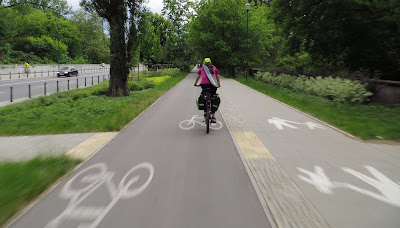A comfortable city enhances residents' quality of life with good public transportation, quality housing, safety, and access to healthcare. In this article, we'll explore what makes a city livable.
After spending a decade abroad and traveling extensively through the EU region, I've observed that European cities often set the standard for comfort. To provide context, I should mention that I am an electrical engineer by profession and have no formal background in urban planning or city design. However, through my observations, I’ve identified several key factors—both tangible and intangible—that contribute to a city's livability.
Tangible Factors:
- Integrated Public Transport: A well-connected and reliable public transportation system is crucial for reducing traffic congestion and ensuring accessibility for all residents.
- Well-Managed Public Facilities: Parks, libraries, community centers, and other public spaces play a vital role in fostering social interaction and improving overall well-being.
- Efficient Public Services: Access to high-quality healthcare, education, and emergency services ensures that citizens' basic needs are met.
- Well-Maintained Infrastructure: Roads, bridges, pedestrian area, bicycle path, utilities, and other physical infrastructure must be regularly maintained to prevent disruptions in daily life.
- Clean Water Supply: Reliable access to clean drinking water is fundamental to public health and safety.
- Waste Management Systems: Proper disposal and recycling of waste, along with effective sewage systems, help keep cities clean and hygienic.
Intangible Factors:
- Safety and Security: Residents should feel secure in every part of the city, whether they're walking alone at night or enjoying outdoor activities during the day.
- Diverse Lifestyle Options: A welcoming society that embraces diversity—including acceptance of LGBTQ+ individuals and other minority groups—enhances inclusivity and promotes harmony.
- Narrow Social Class Divide: Cities with less economic inequality tend to foster greater social cohesion and reduce tensions between different socioeconomic groups.
- Knowledgeable and Helpful Government Officials: Efficient governance requires officials who are informed, approachable, and committed to serving the public interest.
- Problem-Solving-Oriented City Management: Governments that prioritize solutions over politics create more responsive and adaptive urban environments.
- Technology Integration: Leveraging IT and other advanced technologies enables cities to operate more efficiently, transparently, and trustworthily, ultimately benefiting residents.
In conclusion, while there may not be a one-size-fits-all formula for designing the perfect city, these tangible and intangible factors collectively contribute to creating a comfortable and enjoyable place to live. By studying successful examples like those found in the EU, cities worldwide can improve their residents' lives.
--
Your Feedback is welcome.😊
Your Feedback is welcome.😊

Komentar